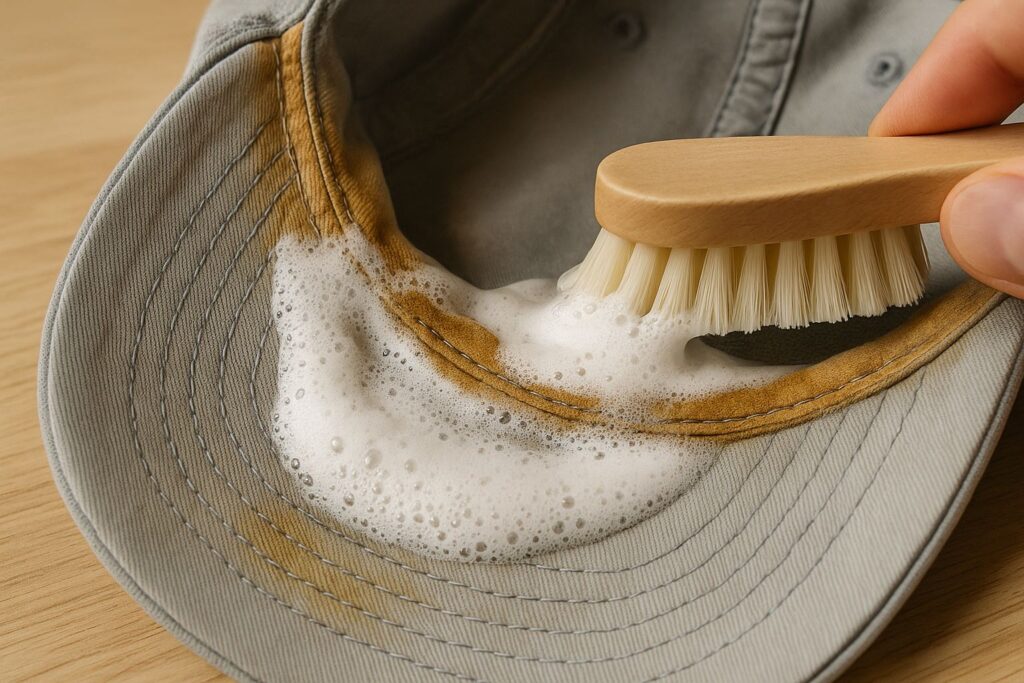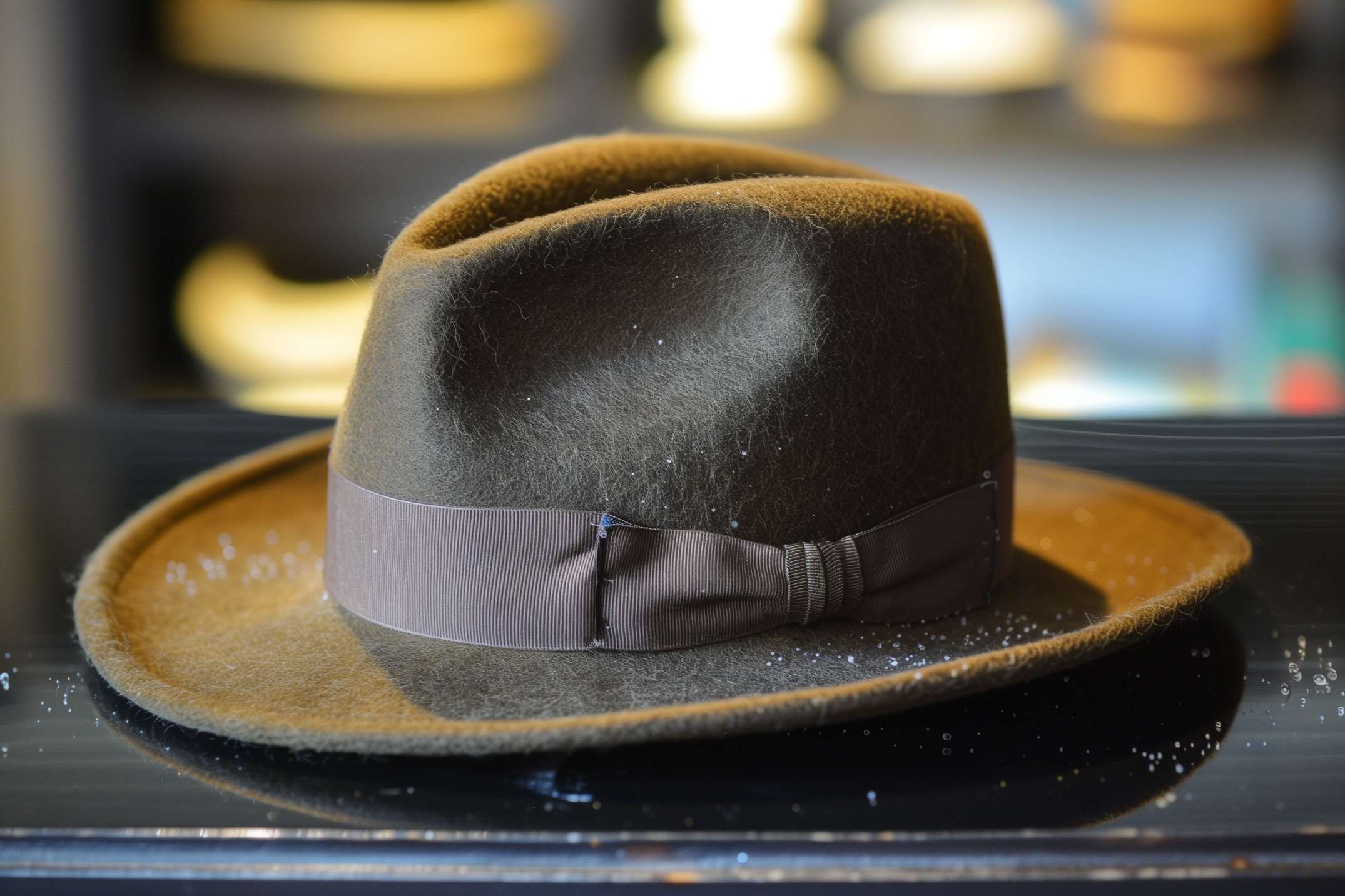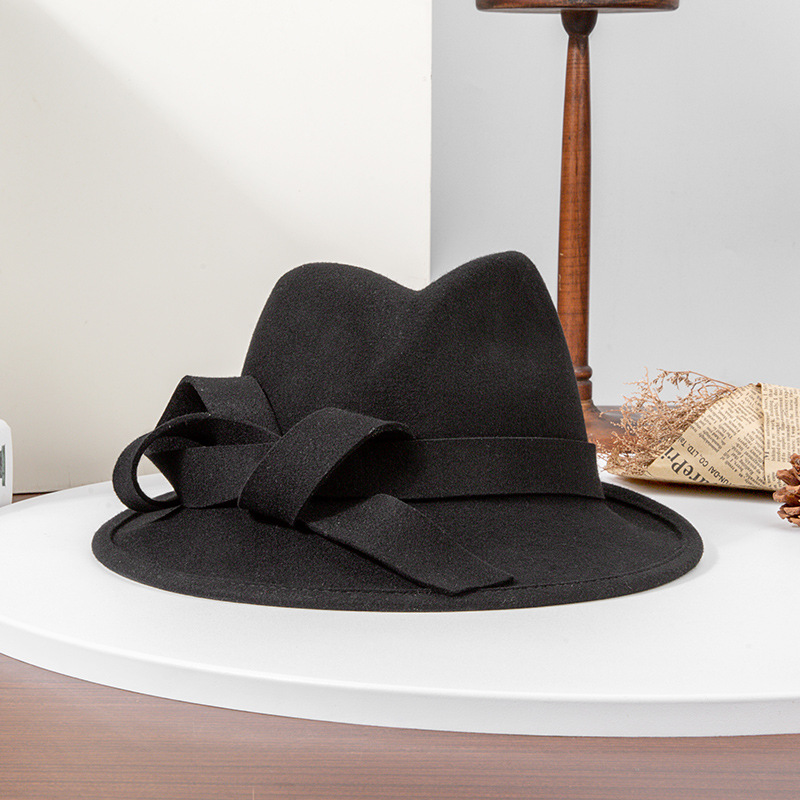Key takeaways
- Start with an inspection and a colorfastness test before any wet work.
- Use spot cleaning and steam refresh for most stains and odors; avoid full immersion for wool/felt.
- Send vintage, glued brims, or multi-trim hats to a professional.
Pre-clean inspection and decision flow
Always inspect the hat for fiber content, glued trims, leather bands, and condition. Wool and felt can shrink or felt when agitated with water; follow fiber guidance before wet cleaning. For disputed colorfastness or heavy staining, use accredited textile tests or a conservator. AATCC documents textile colorfastness procedures for spot checks (AATCC).
Quick decision rules
- DIY: light stains, modern wool felts, removable sweatbands, and intact sewn trims.
- Professional: vintage pieces, glued brims, leather trim, fused trims, or multiple heavy stains or odors.
Spot-clean method (safe, repeatable)
Spot cleaning avoids soaking the hat and keeps risks low. Work one small area at a time and use as little liquid as possible.
Materials you need
- Soft hat brush or clean, soft-bristled brush.
- Cotton swabs and white cotton cloths for blotting.
- Mild, pH-neutral detergent diluted in water (use sparingly).
- Optional: a gentle vinegar rinse for salt rings, used only after a colorfastness test and documented in the job record.
Step-by-step
- Brush surface to remove loose dirt, working with short light strokes.
- Test colorfastness in a hidden area: dampen a white cloth, blot, and check for transfer. For formal disputes use AATCC methods (AATCC).
- Apply diluted detergent with a damp swab. Work outward from the stain; do not saturate the felt.
- Blot immediately with a dry cloth to lift moisture. Repeat as needed with minimal liquid.
- Air dry away from direct heat and sun on a form or clean tapered support.
[Experience Note] Over-wetting is the most common cause of permanent shape loss. Work in small sections and document each step for quality control.
Steam refresh and reshaping
Steam relaxes wool fibers and helps remove light creases and odors without submersion. Use steam to relax, never to soak. Avoid applying steam directly over glued joins or heat-sensitive trims.
How to steam safely
- Hold a handheld steamer or kettle steam at a distance so the hat becomes warm and slightly damp, not wet.
- Gently reshape on a wooden hat block or tapered form while the fibers are relaxed.
- Allow the hat to dry fully on the form before assessing the shape.
[Experience Note] If a brim is glued, steaming can soften the adhesive. Mark glued areas in your intake notes and request a conservator if unsure.
Spot vs steam vs full wash
| Method | Risk to shape | When to use |
|---|---|---|
| Spot cleaning | Low | Small stains, light soil |
| Steam refresh | Low–Medium | Odors, light creases |
| Full wash | High | Only clearly labeled washable hats or modern felts |
FAQ
Can I wash a wool hat in a home washing machine?
We do not recommend machine washing wool or felt hats. Agitation and heat commonly cause shrinkage and felting. If the care label says machine washable, request a sample test or consult a pro. See general care-label guidance from the FTC (FTC).
Will steaming shrink my felt hat?
Steam relaxes fibers and does not usually cause shrinkage when used sparingly. Avoid prolonged, direct heat and do not steam glued areas. When in doubt, test a hidden area first.
How do I test colorfastness before wet cleaning?
Dampen a white cloth and blot a hidden interior spot. If dye transfers, do not wet-clean that area. For formal disputes use AATCC colorfastness methods (AATCC).
When should I always use a professional cleaner?
Use a pro for vintage hats, glued brims, leather trims, or multi-trim items. Require a documented sample test and photos before full work.






